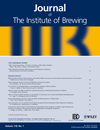
JOURNAL OF THE INSTITUTE OF BREWING
Scope & Guideline
Pioneering Research for Beverage Excellence
Introduction
Aims and Scopes
- Brewing Science and Technology:
The journal emphasizes the scientific principles underlying brewing processes, including fermentation, mashing, and the role of various ingredients like barley, hops, and yeast. - Quality and Sensory Evaluation:
A core area involves the study of beer and spirit quality, encompassing sensory evaluation and consumer preferences, which helps brewers enhance product appeal. - Microbiology and Fermentation:
Research on microbial contributions to brewing, including yeast behavior, spoilage organisms, and fermentation kinetics, is a significant focus, reflecting the importance of microbiology in brewing. - Innovation in Brewing Techniques:
The journal supports innovative approaches in brewing technology, such as novel fermentation methods, enzyme applications, and equipment advancements to improve efficiency and product quality. - Sustainability and Resource Utilization:
Research on the utilization of brewing by-products, waste management, and sustainable practices in brewing highlights the journal's commitment to environmental stewardship.
Trending and Emerging
- Non-Alcoholic and Low-Alcohol Beers:
Research on non-alcoholic and low-alcohol beer production has gained traction, driven by consumer demand for healthier options and innovations in fermentation techniques. - Metabolomics and Flavor Profiling:
Emerging studies using metabolomic approaches to profile flavors and aromas in beers and spirits highlight the growing interest in understanding complex flavor compounds and their sources. - Sustainability in Brewing Practices:
There is a notable increase in research focused on sustainable brewing practices, including waste utilization and environmentally friendly production methods, reflecting broader industry trends towards sustainability. - Technological Innovations in Brewing:
The adoption of new technologies, such as CRISPR for yeast detection and advanced distillation techniques, shows a trend towards integrating cutting-edge science with traditional brewing methods. - Microbial Diversity and Its Impact on Flavor:
Increasing interest in the role of microbial diversity in fermentation processes underscores a trend towards understanding how different microorganisms influence flavor and quality in brewing.
Declining or Waning
- Traditional Brewing Practices:
Research on historical brewing methods and traditional practices appears to be waning, possibly as the industry shifts towards modern techniques and innovations. - Basic Ingredient Studies:
There seems to be a reduction in studies focused solely on basic ingredient characteristics (e.g., single-variety barley or hops), as the focus moves towards integrated studies involving complex brewing processes. - General Reviews without Novel Insights:
The journal may be receiving fewer general review articles that do not provide new insights or data, emphasizing a trend towards more original research contributions.
Similar Journals
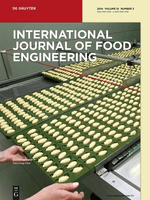
International Journal of Food Engineering
Pioneering Research for a Sustainable Food FutureThe International Journal of Food Engineering, published by WALTER DE GRUYTER GMBH, serves as a pivotal platform for cutting-edge research in the field of food engineering. With an ISSN of 2194-5764 and an E-ISSN of 1556-3758, this journal focuses on innovative technologies, production processes, and quality control within food systems. Located in Germany, the journal has gained notable recognition, as reflected in its Scopus rankings, which place it within the 61st percentile in miscellaneous engineering and the 50th percentile in food science. Although it operates under a traditional access model, the journal's striking category quartiles signify its importance: achieving Q2 in Engineering and Q3 in both Biotechnology and Food Science in 2023. By fostering interdisciplinary research, the International Journal of Food Engineering aims to connect scientists, engineers, and industry professionals, ultimately contributing to advancements in food safety, sustainability, and nutrition. Join a vibrant community of experts driving innovation and addressing global food challenges through your contributions to this esteemed journal.

OENO One
Connecting Researchers to the Heart of Wine Science.OENO One, published by the International Viticulture and Enology Society (IVES), stands as a leading open-access journal dedicated to advancing the science of viticulture and enology since its inception in 2015. Operating out of France, this innovative journal is pivotal in disseminating high-quality research that impacts the fields of Food Science and Horticulture, evidenced by its notable category quartiles—Q2 in Food Science and Q1 in Horticulture as of 2023. With Scopus rankings placing it in the 82nd percentile in Horticulture and the 62nd percentile in Food Science, OENO One delivers timely insights and robust findings to its readers, fostering collaboration and knowledge exchange among researchers, professionals, and students alike. The journal embraces a forward-thinking approach, featuring research from various aspects of wine production, quality assessment, and viticultural practices, making it an essential resource for anyone involved in these disciplines.
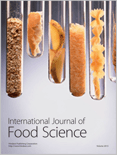
International Journal of Food Science
Exploring Innovative Solutions for Global Food ChallengesThe International Journal of Food Science, published by HINDAWI LTD, stands as a crucial platform for advancing knowledge within the realm of food science. Established in 2013, this Open Access journal based in Egypt has garnered significant recognition, achieving an impressive Q2 classification in the 2023 Food Science category, which reflects its commitment to quality and impactful research. With a Scopus rank of #88 out of 389 in Agricultural and Biological Sciences and placing in the 77th percentile, this journal serves as an essential resource for researchers, professionals, and students dedicated to innovative developments and scientific exploration in food science. The journal not only provides unrestricted access to valuable research but also aims to foster collaboration and dissemination of knowledge on critical issues affecting food safety, nutrition, and technology. For those looking to keep abreast of the latest advancements, the International Journal of Food Science is certainly an indispensable addition to their academic pursuits.

CZECH JOURNAL OF FOOD SCIENCES
Elevating Standards in Food Safety and QualityCzech Journal of Food Sciences is a premier publication in the field of food science, disseminating vital research since its inception in 1999 and transitioning to Open Access in 2007. Published by the Czech Academy Agricultural Sciences, this journal facilitates the exchange of knowledge among researchers, professionals, and students dedicated to advancing the understanding of food systems, safety, and technology. With an ISSN of 1212-1800 and an E-ISSN of 1805-9317, it holds a respectable position with a Q3 ranking in the Food Science category for 2023, illustrating its commitment to high-quality research despite its Scopus rank of 209 out of 389, situated in the 46th percentile. Located in the heart of the Czech Republic, at TESNOV 17, PRAGUE 117 05, this journal serves as an essential resource for those involved in agricultural and biological sciences, paving the way for innovative discoveries and applications in food science.
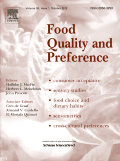
Food Quality and Preference
Innovating Understanding of Flavor and NutritionFood Quality and Preference is a leading journal in the fields of food science and nutrition, published by ELSEVIER SCI LTD. With a notable impact factor and ranking in the Q1 quartile for both food science and nutrition and dietetics in 2023, this journal consistently publishes high-quality research that explores the multifaceted aspects of food preferences, sensory evaluation, and consumer behavior. The journal provides a critical platform for researchers, professionals, and students engaged in the study of food quality, aiming to enhance our understanding of how sensory properties, nutritional value, and consumer choices intersect. Its commitment to disseminating cutting-edge findings makes it an essential resource for advancing the field and informing practice in both academic and industry settings. Access to the journal is via subscription, allowing for robust engagement with pioneering research that shapes current and future practices in food-related studies.
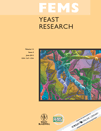
FEMS YEAST RESEARCH
Pioneering Research in Applied MicrobiologyFEMS Yeast Research, published by Oxford University Press, is a leading academic journal dedicated to the study of yeast biology, focusing on various aspects such as physiology, genetics, and biotechnology applications. With an ISSN of 1567-1356 and an E-ISSN of 1567-1364, this journal serves as a vital resource for researchers, professionals, and students alike, fostering advancements in the field of applied microbiology and biotechnology. Recognized for its significant contributions, it holds a 2023 Q2 ranking in both Applied Microbiology and Biotechnology and Medicine (miscellaneous), reflecting its influence within the scientific community. Operating from its base in the United Kingdom, FEMS Yeast Research spans over two decades, with content converging from 2001 to 2024, and continues to disseminate innovative findings that underpin both basic research and practical applications. Researchers can explore cutting-edge studies, engage with expert opinions, and contribute to a growing knowledge base in yeast research, making this journal an indispensable tool for scientific inquiry and discovery in the microbiological landscape.
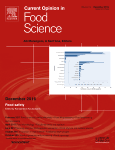
Current Opinion in Food Science
Transforming Food Science Through Critical DialogueCurrent Opinion in Food Science is a premier peer-reviewed journal published by ELSEVIER SCI LTD that focuses on the latest advancements and research in the domain of food science and technology. With its ISSN 2214-7993 and E-ISSN 2214-8000, this journal serves as a critical platform for researchers and professionals to share insights and opinions on emerging trends, innovations, and challenges faced in food science. The journal enjoys an impressive impact factor and ranks in the first quartile (Q1) in both Applied Microbiology and Biotechnology and Food Science, symbolizing its influence and reputation in the field. It is strategically located in the Netherlands and conducts its academic dialogue with a broad scope that includes essential topics in food safety, nutrition, and sustainable practices. Operating from 2015 to 2024, the journal has established itself as a critical resource for the global academic community, boasting excellent Scopus rankings—#9 out of 389 in Food Science and #6 out of 127 in Applied Microbiology and Biotechnology—indicating its high relevance and impact. Readers can look forward to insightful articles and comprehensive reviews that bridge the gap between fundamental research and practical application in the ever-evolving food science landscape.
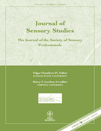
JOURNAL OF SENSORY STUDIES
Transforming Sensory Research for a Flavorful FutureWelcome to the Journal of Sensory Studies, an influential publication dedicated to advancing research in the fields of food science and sensory systems. Published by Wiley, this esteemed journal, with an ISSN of 0887-8250 and E-ISSN of 1745-459X, has been at the forefront of sensory research since its inception in 1986. With a commitment to high-quality scholarship, the journal holds a Q2 ranking in Food Science and a Q4 ranking in Sensory Systems, reflecting its significant impact in these specialized areas. Researchers and professionals will find a wealth of knowledge as the journal disseminates critical insights on sensory perception, food product development, and innovative methodologies in sensory evaluation. The journal does not currently offer open access options, making it crucial for institutions and scholars focused on sensory research to stay connected. As the field evolves, the Journal of Sensory Studies continues to redefine standards and forge pathways for future inquiry through its engaging articles, fostering a deeper understanding of sensory experiences and their implications.
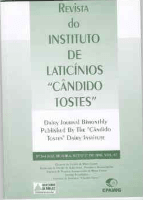
Journal of Candido Tostes Dairy Institute
Transforming Dairy Knowledge into Practical SolutionsJournal of Candido Tostes Dairy Institute, published by the prestigious INST LATICINIOS CANDIDO TOSTES, has established itself as a vital resource in the field of dairy science and technology. This Open Access journal, operating since 2008, provides an inclusive platform for researchers, professionals, and students to share groundbreaking findings and innovative practices related to dairy production, processing, and quality. Located in Brazil, this journal aims to advance knowledge and standards within the dairy industry, ensuring global access to high-quality, peer-reviewed research. The journal not only contributes to the scientific community but also supports practical advancements that benefit dairy producers and consumers globally. By fostering collaboration among scholars and practitioners, the Journal of Candido Tostes Dairy Institute plays a crucial role in shaping the future of dairy sciences. We encourage contributions that explore novel aspects of dairy research, thereby bridging theoretical insights with industry applications.
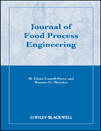
JOURNAL OF FOOD PROCESS ENGINEERING
Pioneering advancements in food process engineering.JOURNAL OF FOOD PROCESS ENGINEERING, published by WILEY, is a prestigious academic journal dedicated to advancing the field of food processing through innovative engineering research and practical applications. With an ISSN of 0145-8876 and an E-ISSN of 1745-4530, this journal serves as a crucial platform for researchers and professionals focusing on the intersection of chemical engineering and food science. Operating in the United States and established in 1977, it has gained a reputation for its rigorous peer-review process and high-quality publications, reflected in its Category Quartiles of Q2 in both Chemical Engineering (miscellaneous) and Food Science for 2023. The journal is also well-positioned within the Scopus rankings, holding the 104th spot out of 389 in Agricultural and Biological Sciences and the 82nd in General Chemical Engineering. While it currently does not offer Open Access options, the JOURNAL OF FOOD PROCESS ENGINEERING remains an indispensable resource for those looking to explore critical studies and developments that shape food processing technologies by the year 2024 and beyond.